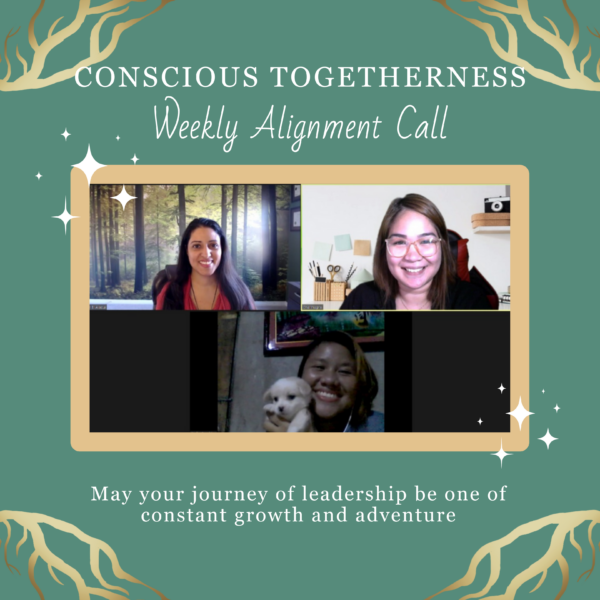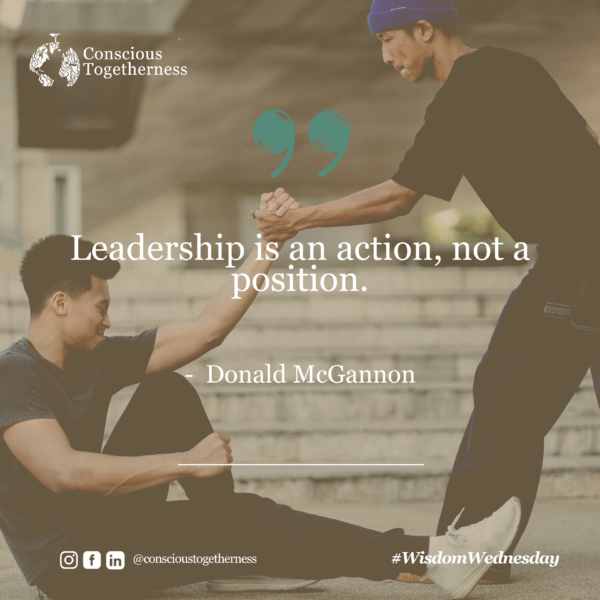“The greatness of humanity is not in being human, but in being humane.”
–Mahatma Gandhi
Leadership is not just an epitome of power; it is a privilege- a privilege to create a positive impact in the society or the spaces where we are moving. It is a privilege to influence and drive others to do things for a more significant and universal cause.
Nowadays, people rely too much on technology, losing touch with their humanity and humaneness.
This last part of the blog series is the culmination of rewiring your mind and cultivating a heart as a wise, compassionate leader. It is putting everything that we have learned into practical application. Because we believe that theory without application is useless.
Ways on How to Be Humane in the Digital Workspace
Promote a Culture of Care
Leaders who consistently check on their employees help create a humane workplace, demonstrating that the company cares about its people. Leaders should make staff feel appreciated and motivated, energized, and inspired.
This is attainable by setting challenging goals for them, providing opportunities for the team members to engage and innovate inside the business, energizing them by fostering a shared culture, and investing in them by honoring and acknowledging them.
Learn how our coaching and mentoring enhances your leadership and career satisfaction.
Create a sense of belongingness
Leaders should show compassion towards their team.
Business organizations should encourage teams and their members to communicate and develop genuine ties by continuously working together to understand their needs.
Openness to mistakes and imperfections should be encouraged and allow teams to go out of their comfort zones and brainstorm innovative ideas.
Team members who are confident in their leaders’ support are more likely to take calculated risks, thus fostering growth and belongingness in the team.
Foster accountability through collaborative and seamless workflow
When roles, duties, and tasks are delineated, personal accountability is fostered.
Employees should be aware of their responsibilities and be held accountable for fulfilling or going beyond those responsibilities. Organizations should focus on the intangibles, such as cultivating agility, cooperation, and a sense of ownership, by paying attention to how things are done.
This means accountability goes hand in hand with efficiency.
Therefore, it is imperative to create process flow through collaborative efforts to promote a seamless workflow. This allows the team to be on top of things consistently, perform directives accurately, and achieve goals.
Honor personal quality time and space
Despite the intersection of pandemic and global economy, it does not discount the fact that competition is still present. Business organizations are able to adapt and thrive.
Although remote work is now slowly being accepted as a norm, stress and challenges are still inevitable.
Employees must first and foremost be recognized as humans when it comes to creating a humane workplace. On the other hand, effective, wise, and compassionate leaders ensure that they know what is going on in their employees’ lives, mainly if the event is significant.
Employee loyalty, engagement, and even productivity improve when you create genuine relationships with them.
In addition, it has become more crucial now that technology is integrated into the workplace, and the pandemic has pushed the office to a virtual environment. Keep in mind that in Zoom meetings, employees are more than just a 3D display. They are creative people, and if their uniqueness isn’t recognized, they may seek other opportunities.
How to improve retention and camaraderie in the digital workspace? Allow your team to collaborate, become more versatile in the workplace, and acknowledge key life events.
Practice openness and transparency
Our obligation as leaders is to provide the direction people need, even if it is tough for them to hear. If a team member is struggling, be honest with them and tell them what they need to improve.
People will not comprehend expectations or benefit from your expertise if you hide your worries to be kind. As a result, hiding constructive criticism is not only unkind but also deceptive. Instead, be honest and deliver the feedback with a kind attitude rather than blame.
Practice one everyday direct interaction
Being kind is your comfort zone if your natural inclination is toward compassionate leadership. Try to make it a practice to have at least one direct encounter with a person every day to increase your wisdom. It will assist you in breaking out of your comfort zone and improving your leadership wisdom.
Putting the Foundations into Practice
The Conscious Togetherness team is well aware of the challenges of working remotely. In order for us to be consistently aligned with our work and our vision, we have developed these best practices. These enable us to be more effective and productive and create an enjoyable and growth-centered digital workspace.

Provide constructive feedback/criticism and room for growth. We acknowledge our imperfections. We are open to mistakes and providing constructive feedback to avoid them in the future. We also engage in discussion to better understand the root cause of the issue to develop a better process flow and solution.
More importantly, we leave allowances for mistakes and room for improvement and growth through providing training.
Set weekly meetings. We value communication. We set weekly meetings to discuss tasks and goals. We also use such time to catch up on each other’s personal lives and give recognition and affirmations on a task or job well done.
Our team puts a premium on communication. We also use this avenue to close the loops when a task is completed to assess and keep track of the progress and the milestones that we have achieved.
Book meetings in the calendar and remove them if not needed. Removing time as an excuse provides predictability and a message that we are available for each other and the work. Blocking time for meetings and then removing it if not needed changes the paradigm of meeting to solve issues and to proactively create a good atmosphere and high work standards.
Assign tasks according to a team member’s strengths and awareness of each other’s way of working. Instead of just assigning work asking who likes to do which tasks, tasks are matched according to the team member’s skills, strength, and zone of genius bringing in strength and motivation.
Availability for questions: recognizing no questions are nonsense. Part of our core values is honesty and transparency. We acknowledge questions and answer them as accurately and respectfully, and to the best of our knowledge because we believe that we don’t know what we don’t know.
Appreciating each other’s character and wins. acknowledging being and doing, not just actions. This ensures we all feel seen, heard, and supported.
Creating a more sustainable workflow. Whenever technical tasks are done, our team ensures that everyone is on the same page. We design standard operating procedures or SOPs to streamline our workflow and to also help other team member’s catch up on new issues and processes.
At the beginning of collaborations, each weekly meeting covered three things: What went well, what didn’t go well, what to do differently. We co-create the processes together.
Final Thoughts
Bear in mind that leadership has a complex concoction of power, discipline, selflessness, humaneness, authority, and wisdom.
The foundation of authentic leadership starts with her awareness of her role that moves to the heart or attitude and flows through her body or actions. Therefore, it entails a commitment to go beyond. Leadership is more than just a role; it is a privilege to show compassion, nurture, and assist your team in reaching their highest potential whilst achieving your vision.
PS: I have a waiting list at the moment. Make sure to book your call to begin your journey as soon as possible.
Subscribe to our newsletter for tools and invitations that guide your purpose driven life & leadership.

